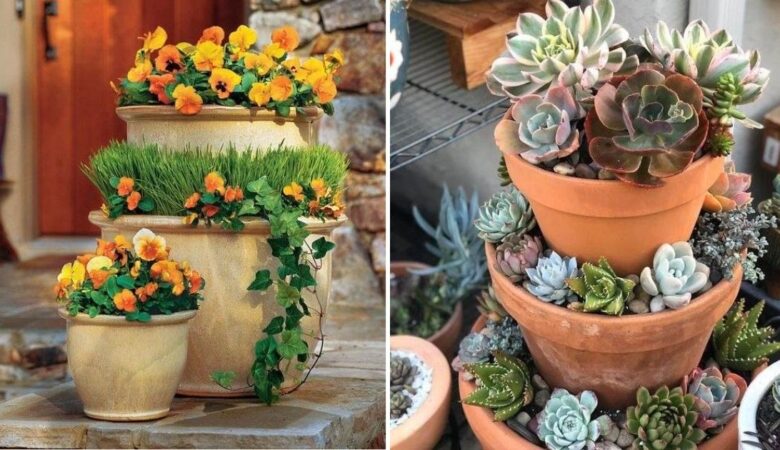Have you ever wondered why black-eyed susans seem to thrive in every garden, no matter the conditions? Known for their vibrant golden petals and dark centers, these flowers are a staple in gardens across the United States.
While many think of them as just pretty additions to a garden, there’s more to these hardy flowers than meets the eye. From their name to their medicinal uses, there are so many other secrets that make them truly special.
1. Native Roots and Historical Background
Black-eyed Susans are indigenous to various parts of the United States. After Columbus’s voyages, they were introduced to Europe, gaining popularity quickly.

Carl Linnaeus, a Swedish botanist, gave them the scientific name Rudbeckia hirta, combining the name of his mentor, Olaf Rudbeck, and “hirta,” meaning rough or hairy, referring to the plant’s texture.
2. Medicinal Uses in Native American Culture

The medicinal properties of black-eyed Susans were well-known to Native American tribes. They used the plant to treat wounds, snake bites, and even colds in children.
A poultice made from the plant’s roots was believed to relieve inflammation and reduce swelling. It was also used as a wash for sores.
3. State Symbol of Maryland
Black-eyed Susan became the official state flower of Maryland in 1918. The vibrant blooms play a significant role in Maryland’s culture, especially during the Preakness Stakes, the second leg of the Triple Crown.

4. Self-Seeding Nature
One of the best-kept secrets of black-eyed Susans is their ability to self-seed prolifically. This means you can plant them once, and they’ll return year after year with minimal effort. Each plant produces numerous seeds that are carried by the wind or animals, allowing new plants to grow.
See also 29 Unique Ideas Made From Tires To Change The Look Of Your Garden

5. Drought and Heat Tolerance
Black-eyed Susans are remarkably resilient, thriving in full sun and tolerating both drought and heat. Their tough, hairy leaves help reduce water loss, allowing them to survive in various soil conditions. This resilience makes them perfect for xeriscaping or low-water gardens, especially in regions with hot, dry summers.
6. Long Blooming Season

These plants boast one of the longest blooming seasons, producing flowers from mid-summer until the first frost. Their continuous bloom provides vibrant color when many other plants have finished their season.
7. Attracting Pollinators
Black-eyed Susans are a magnet for bees, butterflies, and other pollinators. Their bright colors and abundant nectar make them a favorite for beneficial insects, helping promote a healthy ecosystem in your garden.

8. Deer Resistance
Another great feature of black-eyed Susans is their natural resistance to deer. Thanks to their rough, hairy leaves, deer are less likely to munch on these plants compared to others in your garden.
9. Easy to Grow
Growing black-eyed Susans is easy, even for novice gardeners. The seeds can be sown directly in the ground after the last frost, and they’ll germinate within two weeks.

They thrive in full sun but can tolerate partial shade. Once established, these plants require little maintenance and will continue to spread naturally.
10. Versatile Landscaping Plant
The bold, cheerful blooms of black-eyed Susans provide contrast against greenery and other flowers, making them versatile enough for nearly any garden design. You can use them in borders, mass plantings, or as focal points to brighten up your outdoor space.
See also 36 Small Zen-Inspired Landscaping Ideas For Garden Corners

11. Symbolism and Folklore
Black-eyed Susans are steeped in symbolism, often representing encouragement, justice, and protection. In folklore, they are believed to bring good fortune and protection to gardens.
12. Emotional and Therapeutic Benefits
Black-eyed Susans are believed to aid in self-reflection and emotional growth when combined with practices like journaling or meditation. Their vibrant color and sturdy nature serve as a reminder of resilience and positivity, making them a powerful tool in personal development.
13. Connection to the Triple Crown

Each year during the Preakness Stakes, the winning horse is adorned with a blanket made from hundreds of black-eyed Susans. This floral symbol of triumph and celebration has become a key part of the horse-racing tradition, further elevating the flower’s cultural significance.
14. Companion Planting Benefits
Black-eyed Susans not only enhance the beauty of your garden but also provide natural pest control. They deter harmful insects while attracting beneficial pollinators.

When planted alongside vegetables or other flowering plants, black-eyed Susans help improve the health of your garden, promoting stronger, more resilient growth in surrounding plants.
15. Copper in Black-eyed Susans
Did you know that black-eyed Susans contain copper, a trace mineral crucial for bone metabolism and the formation of red blood cells?
According to scientific research, copper plays an essential role in maintaining healthy bones, aiding in the absorption of iron, and supporting the production of hemoglobin, which is vital for oxygen transport in the body.
[ad_2]






